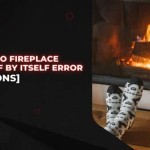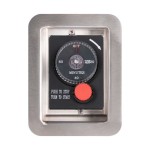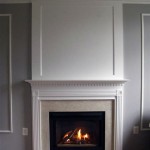Linear Gas Fireplaces: Modern Design and Heating Efficiency
Linear gas fireplaces have emerged as a prominent design element in contemporary homes, offering a sleek aesthetic and efficient heating capabilities. Characterized by their elongated shape, these fireplaces provide a modern alternative to traditional wood-burning or gas-log models. They are often integrated into walls, or feature as a focal point in open-concept living spaces. The appeal of linear gas fireplaces stems from their ability to seamlessly blend into diverse architectural styles while delivering considerable heat output.
The design versatility of linear gas fireplaces is a significant advantage. Available in a variety of lengths, from a few feet to spanning the entire length of a wall, they can be customized to suit specific room dimensions and design preferences. The firebox itself can be adorned with various media, including glass beads, stones, or ceramic logs, allowing homeowners to personalize the fireplace to complement their existing décor. The clean lines and minimalist design of linear fireplaces contribute to a sophisticated and uncluttered atmosphere.
Beyond their aesthetic appeal, linear gas fireplaces offer practical benefits in terms of heating efficiency and convenience. Unlike traditional wood-burning fireplaces, they require no wood storage or manual stoking. They operate on natural gas or propane, offering a consistent and controllable heat source. Many models are equipped with programmable thermostats and remote controls, allowing for precise temperature management and ease of operation. The sealed combustion systems used in most linear gas fireplaces ensure that the combustion process is contained, minimizing heat loss and maximizing energy efficiency.
Benefits of Linear Gas Fireplaces
Linear gas fireplaces offer a multitude of benefits, making them a popular choice among homeowners and designers alike. These benefits extend beyond aesthetics, encompassing energy efficiency, ease of use, and environmental considerations.
A primary advantage is their ease of installation. While professional installation is generally recommended to ensure proper venting and gas line connections, linear gas fireplaces can be installed in a wide range of locations, including existing walls or as part of new construction. Venting options, such as direct vent or vent-free models, provide flexibility in placement. Direct vent models draw combustion air from outside the home and exhaust combustion gases directly outside, ensuring optimal air quality within the living space. Vent-free models, while offering greater installation flexibility, require careful consideration of ventilation requirements to maintain safe indoor air quality.
The operational convenience of linear gas fireplaces is another key benefit. With the push of a button or the flick of a switch, the fire is ignited, and the desired heat output can be adjusted. There is no need to deal with the mess and labor associated with wood-burning fireplaces, such as gathering wood, building a fire, and cleaning up ashes. The consistent and controllable heat provided by gas fireplaces ensures a comfortable and predictable indoor environment. Many models also include safety features such as automatic shut-off valves and flame sensors, providing added peace of mind.
Furthermore, the energy efficiency of linear gas fireplaces contributes to reduced energy consumption and lower heating costs. The sealed combustion systems minimize heat loss, and the precise temperature control allows for efficient heating of specific areas within the home. In addition, gas is a relatively clean-burning fuel compared to wood, resulting in lower emissions and a reduced environmental impact. Choosing a linear gas fireplace with a high energy efficiency rating can further enhance these benefits.
Design Considerations for Linear Fireplaces
Incorporating a linear gas fireplace into a home design requires careful consideration of several factors, including placement, venting options, media selection, and overall aesthetic integration. The goal is to create a cohesive and visually appealing design that enhances the functionality and comfort of the living space.
The placement of the linear gas fireplace is a crucial decision. Consider the room's layout, the intended focal point, and the availability of venting options. Many homeowners choose to install linear fireplaces along a long wall, creating a dramatic and visually striking feature. In open-concept living spaces, a linear fireplace can serve as a natural divider between different areas, such as the living room and dining room. When selecting a location, ensure that the fireplace is easily accessible for maintenance and that it complies with all applicable building codes and safety regulations.
Venting options also play a significant role in the design process. Direct vent fireplaces require a vent pipe that extends to the exterior of the home, allowing for the intake of fresh air and the exhaust of combustion gases. Vent-free fireplaces, on the other hand, do not require venting but rely on the room's existing ventilation to dilute any combustion byproducts. Direct vent models offer superior air quality and are generally the preferred choice, but vent-free models may be suitable for situations where venting is impractical. Consult with a qualified HVAC professional to determine the most appropriate venting option for your specific needs and installation location.
The choice of firebox media is another opportunity to personalize the linear gas fireplace. Glass beads, stones, and ceramic logs are popular options, each offering a unique aesthetic. Glass beads come in a variety of colors and sizes, creating a modern and shimmering effect. Stones provide a more natural and rustic look, while ceramic logs mimic the appearance of a traditional wood-burning fireplace. Consider the overall décor of the room and select a media that complements the existing color palette and design style. The firebox can also be customized with decorative panels or surrounds, further enhancing the visual appeal of the fireplace.
Finally, ensure that the linear gas fireplace is seamlessly integrated into the overall design of the room. Consider the fireplace's dimensions, proportions, and placement in relation to other architectural elements and furnishings. The fireplace should be visually balanced within the space and should contribute to a cohesive and harmonious aesthetic. Work with an architect or interior designer to create a design that maximizes the impact of the linear gas fireplace while maintaining a functional and comfortable living environment.
Safety and Maintenance of Linear Gas Fireplaces
Proper safety and regular maintenance are paramount to ensure the safe and efficient operation of a linear gas fireplace. Adhering to manufacturer guidelines and performing routine inspections can prevent potential hazards and prolong the lifespan of the appliance.
A critical aspect of safety is ensuring proper ventilation. For direct vent models, the vent pipe must be installed correctly and free from obstructions. Regularly inspect the vent pipe for any signs of damage or deterioration, such as cracks, corrosion, or loose connections. For vent-free models, ensure that the room is adequately ventilated by opening windows or using exhaust fans. Never block or obstruct the vents, as this can lead to a build-up of carbon monoxide, a colorless and odorless gas that can be deadly.
Routine maintenance is essential for optimal performance. Schedule annual inspections and servicing by a qualified HVAC technician. The technician will inspect the gas lines, burners, and control valves to ensure that they are functioning properly. They will also clean the firebox and vent pipe to remove any debris or soot buildup. Regular cleaning can improve the fireplace's efficiency and prevent potential malfunctions.
Pay attention to the flame pattern of the fireplace. A healthy flame should be blue with yellow tips. If the flame is primarily yellow or orange, it may indicate a problem with the gas supply or burner. Contact a qualified technician to inspect and repair the fireplace if you notice any unusual flame patterns.
Install carbon monoxide detectors in your home, especially near the fireplace. Carbon monoxide detectors provide an early warning of the presence of this dangerous gas, allowing you to evacuate the premises and seek professional assistance. Test the detectors regularly to ensure that they are functioning properly.
Keep combustible materials away from the fireplace. Maintain a safe distance between the fireplace and curtains, furniture, and other flammable items. Never use the fireplace to dry clothes or other objects. Follow the manufacturer's recommendations for safe clearances and operating procedures.
Finally, educate all members of your household about the proper use and safety precautions associated with the linear gas fireplace. Ensure that everyone knows how to operate the fireplace safely and what to do in case of an emergency. Emphasize the importance of maintaining proper ventilation and keeping combustible materials away from the fireplace.
By following these safety guidelines and maintenance procedures, homeowners can enjoy the warmth and beauty of their linear gas fireplace while ensuring the safety of their home and family.

Enviro S Gas C72 Linear Fireplace

Linear Gas Fireplaces Valor

Linear Premium Gas Fireplaces Made In America Fireplace Xtrordinair

Vector Lv50 Linear Gas Fireplace Direct Vent By Napoleon

Echelon Ii Linear Gas Fireplace By Majestic S Fireplaces

Why Get A Linear Fireplace How Can Change Your Room

Napoleon Vector 50 Linear Gas Fireplace Lv50n 2 Hvac

Enviro S Gas C72 Linear Fireplace

Corner Fireplaces Modern Gas The Davinci Collection

Boulevard Series Vent Free Linear Gas Fireplace Fine S
Related Posts








